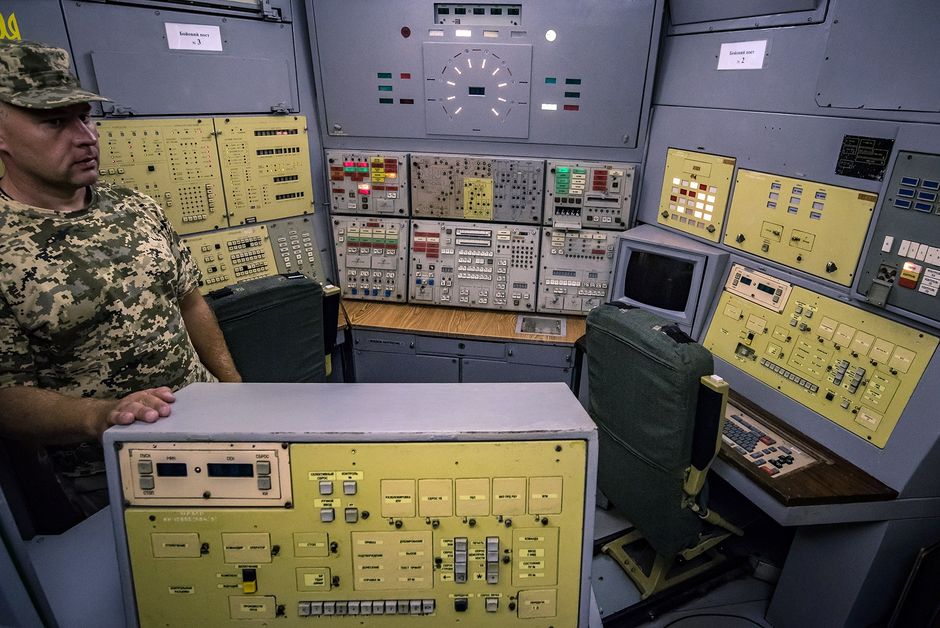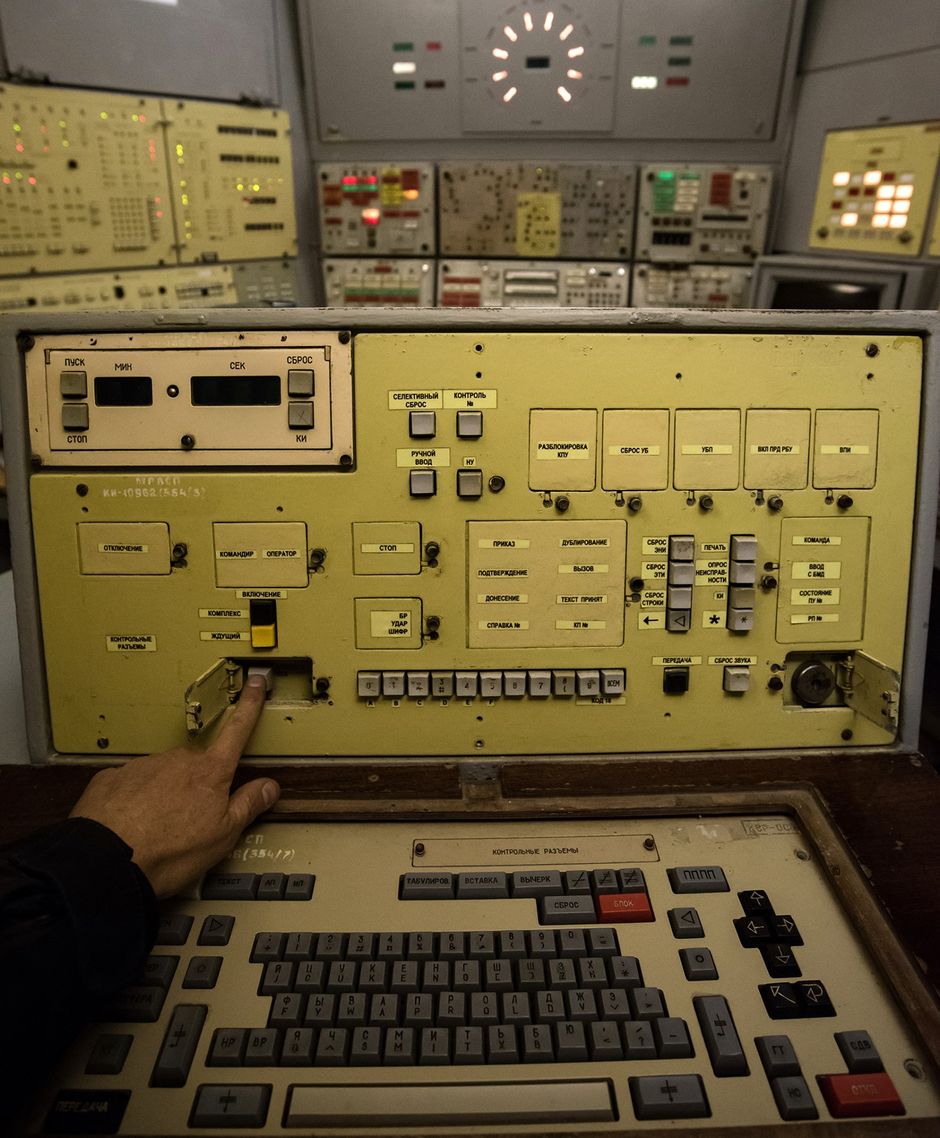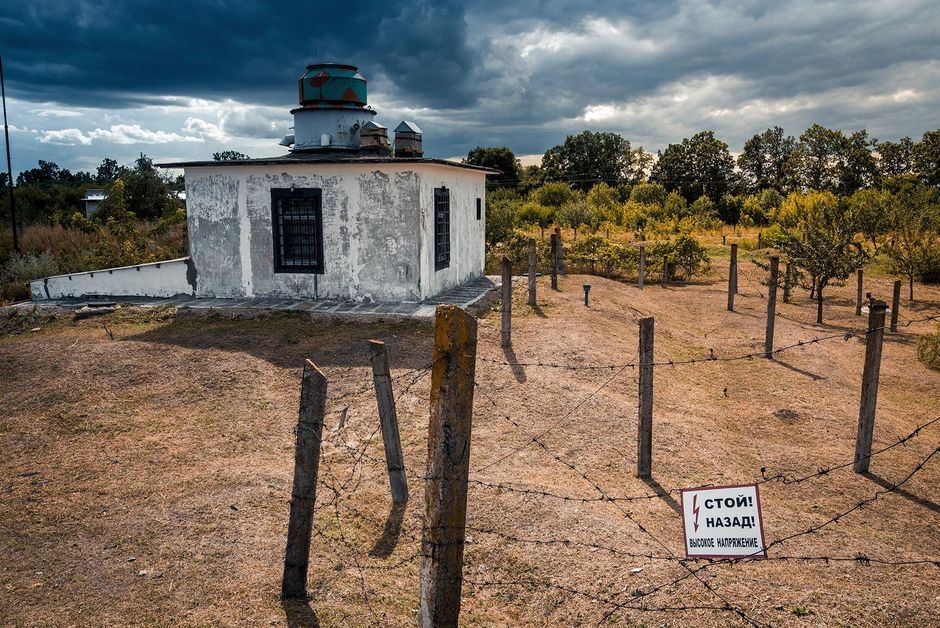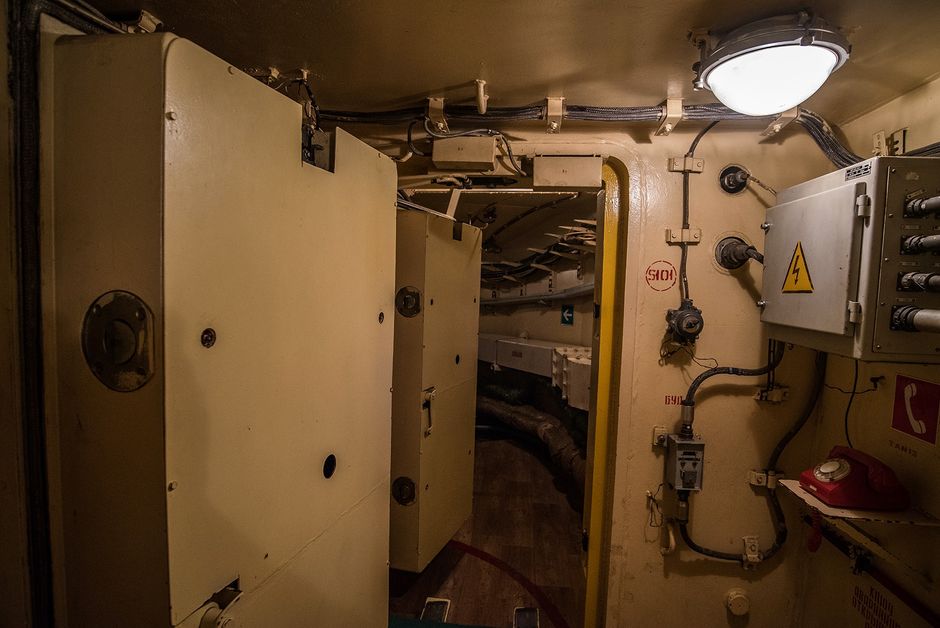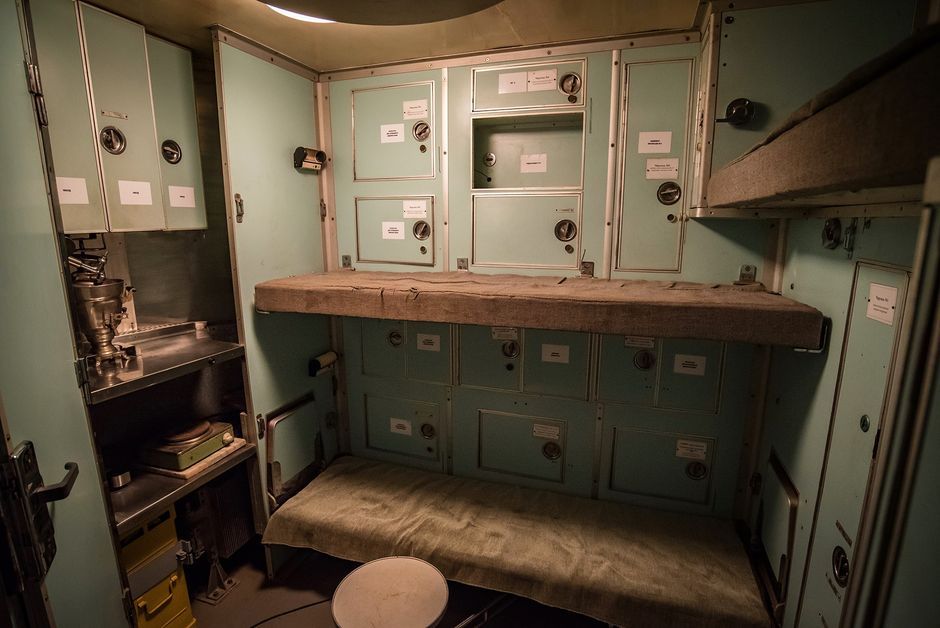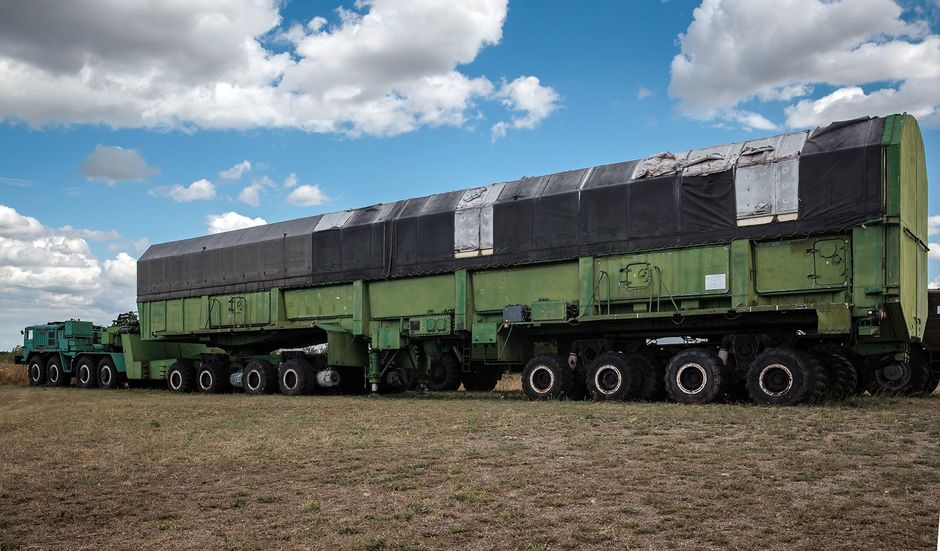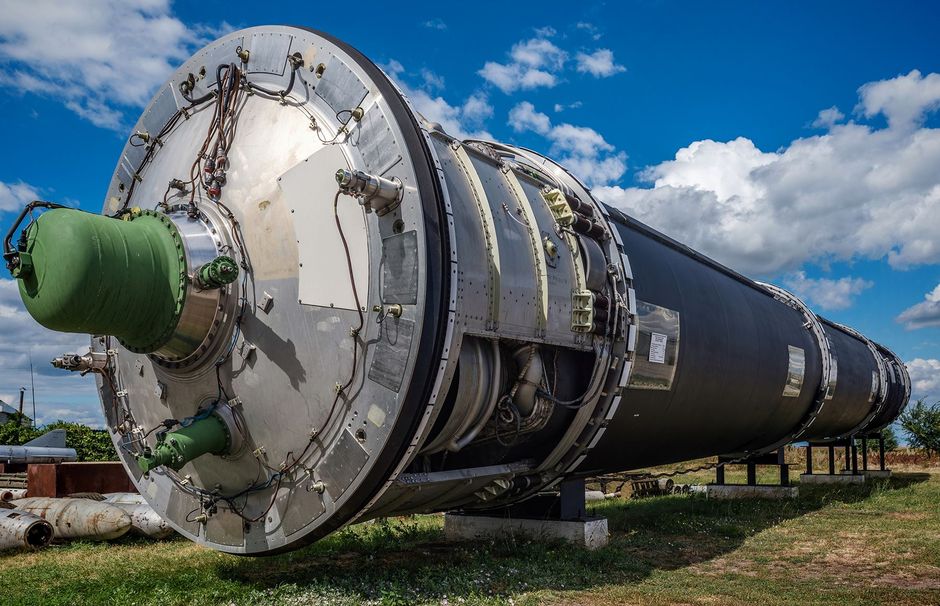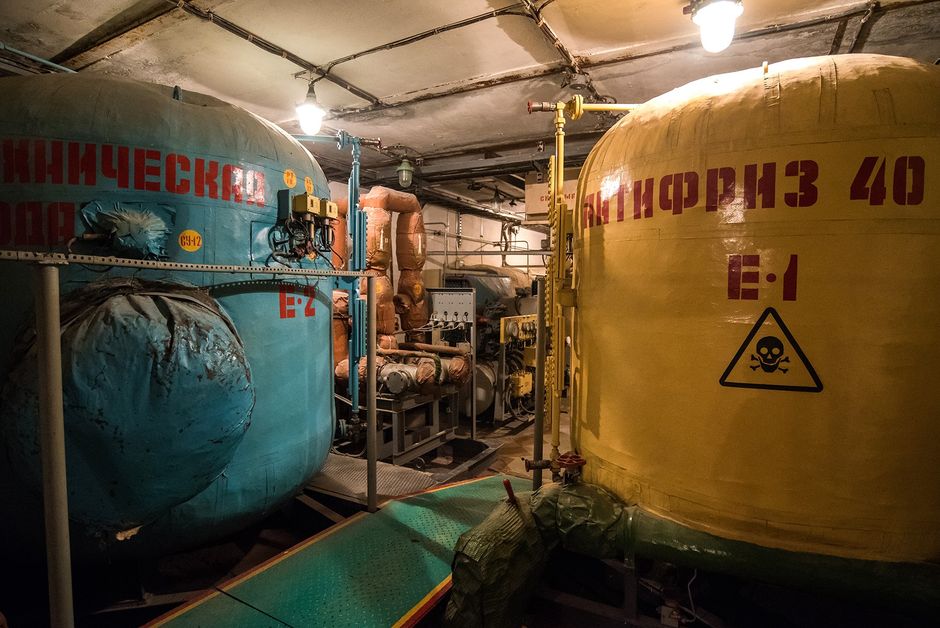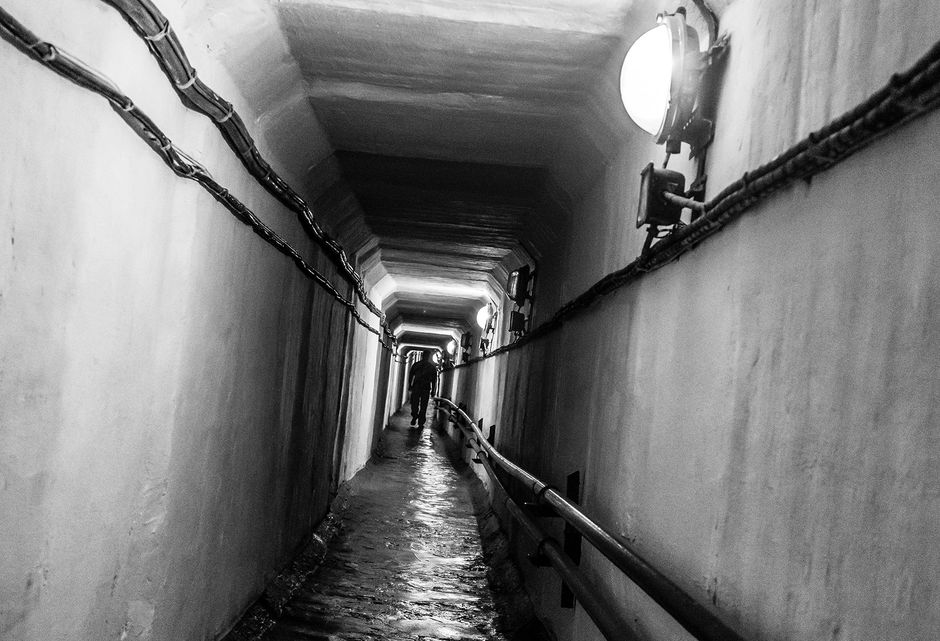Sergeant Alexander of the 46th Rocket Division buckles me into the commander's chair and wrenches the four-point harness down to the point of discomfort. Two massive blast doors seal the control chamber shut 12 storeys below the Ukraine countryside, protecting us from nuclear attack.
The atmosphere down here feels artificial and far removed from the earth's surface 40 metres above. A stuffy mixture of metal and electronics permeates the sterile, cramped space of the command centre. An impressive array of lights and switches — the pinnacle of '70s Soviet technology — blankets the curved wall of the 3.3 metre wide room. All controls have been kept operational to preserve the fidelity of a launch.
It's so quiet you can hear yourself breathe.
Papers are removed from a locked safe, and codes compared with the commands appearing on our screens. They match. The launch directive from Moscow has been authenticated.
Alexander takes a seat in the second officer's chair and barks orders in a mixture of Russian and English.
KLYUCH [key] IN!
ON COUNT THREE. WE PUSH BUTTON!
ОДИН... ДВА...
(If I hesitate at this stage, the Sergeant's Makarov pistol will quickly relieve me of my duty, and a backup officer will take my place.)
ТРИ!!
The harsh, shrill sound of an alarm buzzer ricochets about the confines of the steel room. A semicircular array of missile-shaped status lights starts blinking ominously.
At six seconds, 10 120-ton silo hatches swing open, and three seconds later 10 SS-24 "SCALPEL" thermonuclear missiles ignite their rocket engines.
Alexander grips my chair with both hands and violently shakes it to simulate the kinetics of the 100 ton missile launching next to us. At the same time, nine other SS-24s rocket away from their respective silos.
The Sergeant turns, looks me directly in the eye, and in an accent as thick as tar...
ten. vockits.
twinty. tree. minutes.
bye-bye-amerika.
He grins.
A strike from this facility would've hit the United States with ten missiles, each carrying 10 nuclear warheads. A forest of 100 mushroom clouds would've blanketed the east coast with the combined power of 423 Hiroshimas. An area of 12,000 square miles would've been vaporised along with every living thing in it.
At the height of the Cold War, the USSR managed 176 intercontinental ballistic missiles with nine sites just like this one.
Today there are around 15,000 nuclear weapons in the world, each targeting an adversary. Officers from America, Russia, Britain, France, China, Pakistan, India, Israel, and North Korea are on duty 24/7, waiting for that single coded command, waiting to push that small grey button on the count of three.
"But I’m good at war. I’ve had a lot of wars of my own. I’m really good at war. I love war, in a certain way, but only when we win." — Donald Trump
–––
Clinton Logan is a New Zealander who decided three years ago that "it was time to recalibrate my relationship with the world" and has since ventured forth from his home in New York State to explore, photograph and write about the United States, Canada, Europe, Latin America and, currently, the former Soviet Union. His last post recorded a visit to the site of the Chernobyl nuclear disaster.
The words and pictures in this post are adapted with permission from the personal Facebook account where he records his journeys.
